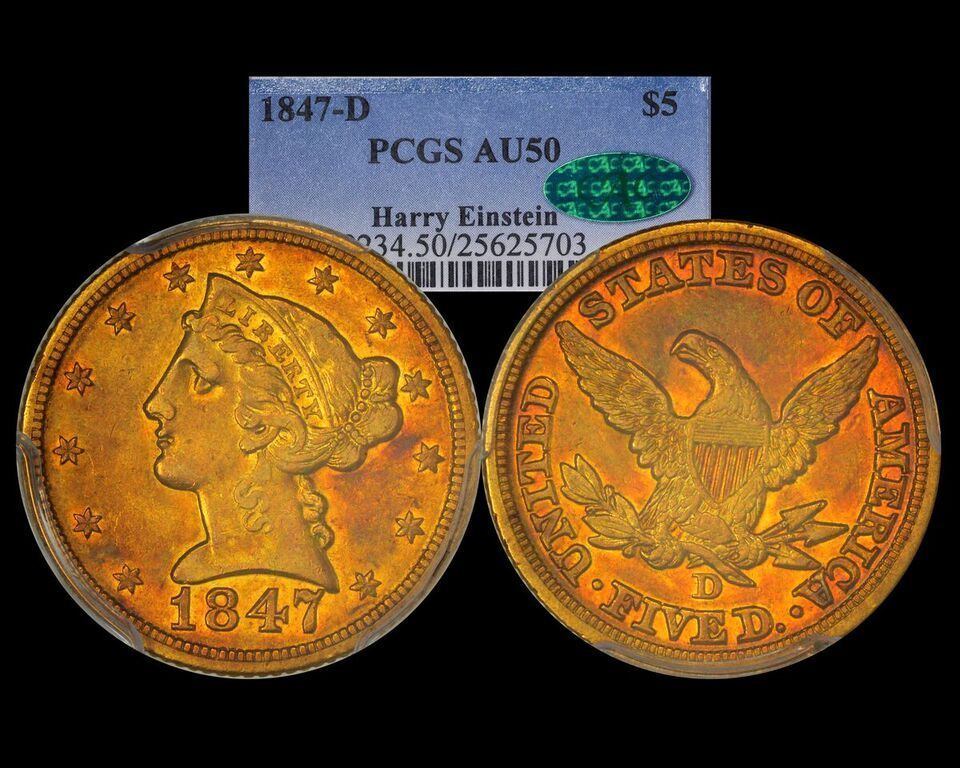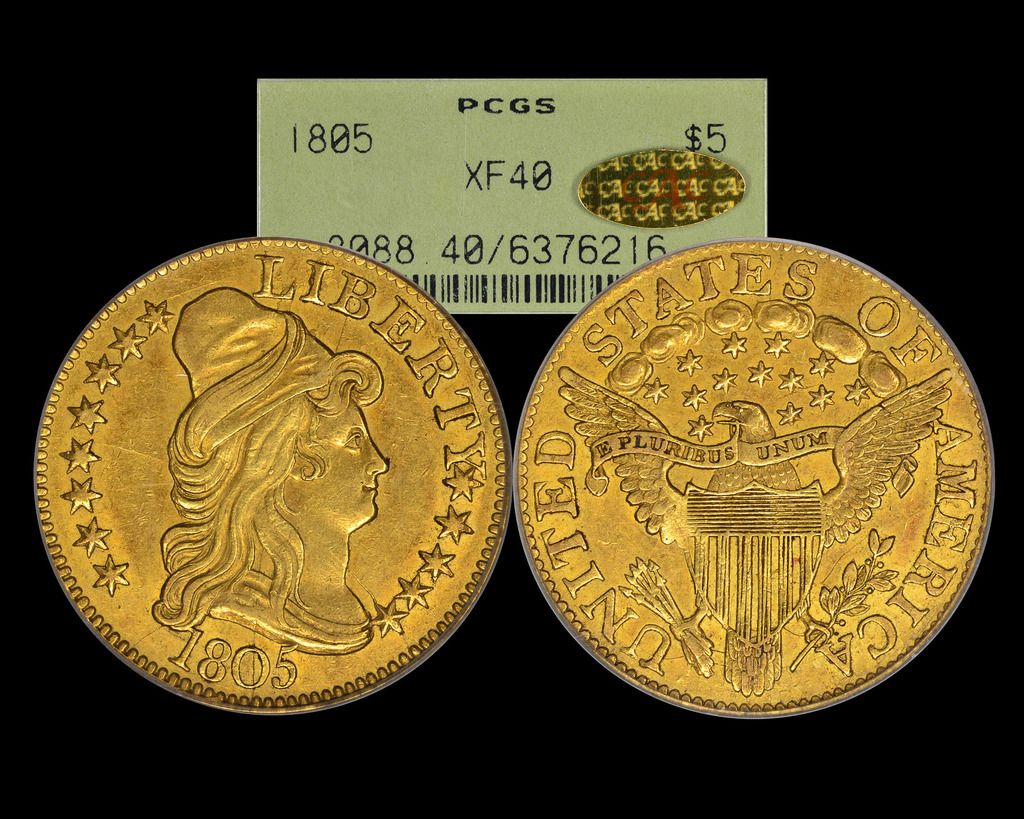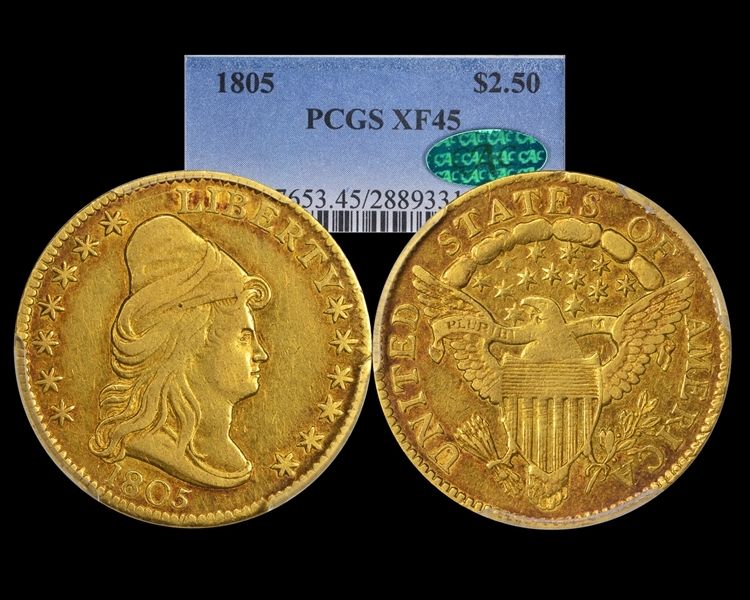My Gradual Transition to Early Gold...
My collecting has been all over the place since I started seriously collecting about 3 years ago. I went from various type coins, to proof type, to proof morgans, to OGH Commems, and now I've settled on Early Gold that has amazing eye appeal and is completely original. I couldn't have done it without the help of a dealer or two and a couple of very helpful forum members. I have more on the way so stay tuned in the coming months.






Collector of Original Early Gold with beginnings in Proof Morgan collecting.
0
Comments
Coin Club Benefit auctions ..... View the Lots
ryk will certainly chime in soon.
'dude
All three are incredible and would be welcome at my place anytime.
Or in a 50 grade holder that'd probably still get a green CAC, where it would look right at home.
Rhetorical, of course.
What a great coin, in a wonderful group.
Latin American Collection
Latin American Collection
Joseph J. Singleton - First Superintendent of the U.S. Branch Mint in Dahlonega Georgia
Findley Ridge Collection
About Findley Ridge
My YouTube Channel
I've had the opportunity to sell a couple of ex Harry Einstein's coins privately over the years and each has been special as he had a keen eye. Harry was the son of a pawnbroker and the cousin of Albert Einstein. Unlike most celebrity auctions in the 1980's a majority of the lots in the sale actually belonged to Einstein. Parkyakarkus was his most famed character which meant "Sit Down". Harry had a bad heart and died in the lap of Milton Berle after a 10 minute on stage comedy bit at a awards dinner for Lucille Ball and Desi Arnaz. Below are a few 1986 newspaper about the sale of his collection I found the last time I did some research on him.
Pre Sale:
Old-time radio listeners might remember "Parkyakarkus," a character created by Boston-born Harry Einstein. Besides being a radio personality and sometime movie actor, Einstein, who died in 1958, was a keen coin collector who was able to retire from show business at the age of 44 on the strength of his investments.
His collection will be sold June 23-25 as part of a major offering of coins at the St. Moritz-on-the-Park Hotel, Central Park South in New York City.
Einstein's collection ran to gold, and of the 855 lots in the catalogue, about 650 contain important gold coins.
Because his collecting began at the end of the era of U.S. gold coins, Einstein cannily gathered coins from the 1930s before the Treasury began its melt-down policy. As a result, the sale will offer a 1933 gold eagle in uncirculated condition, one of between 30 and 40 known to exist.
The collection also includes what the auctioneer, Bowers and Merena Galleries Inc., describes as the finest known 1852 eagle.
Einstein sought out early gold coinage as well. Among the eagles is one made in 1795, the first year of gold coinage, graded about uncirculated, a 1799 piece, and 1801 and 1803 coins, all in high grades.
The collection also offers four high-relief Saint-Gaudens double eagles, which were first struck in 1907 before pragmatism dictated a change in dies to make the coins flatter. The double eagles also include one 1931-D example in uncirculated condition, one of 30 or so surviving.
Notable as Einstein's collection is, the star of this sale will undoubtedly be the 1804 silver dollar to be sold June 25.
The silver dollar formerly had been in the Garrett Collection, and when that $25 million gathering of coins was auctioned in 1980, it sold for $400,000 to Larry Hanks, a Texas dealer. Hanks put the coin up for sale two years later, when the market was staggering, and it fetched $190,000.
The romance surrounding the 1804 dollar has made it the center of detective novels. Its rarity is based on the fact that no dollars of that date were actually struck in 1804; only in 1834, when the mint was assembling presentation proof coins for the Sultan of Muscat, were dollars bearing the 1804 date struck.
Only 15 of the silver dollars are known to exist, and their appearance at any auction marks a numismatic event.
The three-day sale includes a variety of U.S. coins and 24 architectural medals, all by the Wiener brothers, Belgian engravers. These bronze medals depict notable European cathedrals, the Hagia Sophia and the synagogue of Cologne
Post Sale:
Buyers paid $1.5 million for a collection of gold coins amassed by entertainer Harry Einstein when it went on sale in June in New York.
An additional $1.8 million was realized from other coins offered in the same two-day sale conducted by Bowers and Merena Inc.
The star of the sale was the 1804 silver dollar that had been part of the Garrett Collection. That coin was not part of Einstein's hoard. Because the coin is one of only 16 known, its progress has been charted carefully bycollectors. Larry Hanks, a Texas dealer, paid $400,000 for it in 1980 at a Garrett sale. Two years later, he sold it at auction - for $190,000. In June, despite high bidding interest, the coin brought $187,000.
One of Einstein's coins, a 1933 gold eagle in near-pristine condition, sold for $79,200. Two Saint-Gaudens double eagles in proof condition sold at $28,600 apiece. One was 1911 and the other 1915, but proofs were struck in editions limited to 100 or fewer in both years.
Einstein, who died in 1958, collected top-grade gold, and the buyer response justified his diligence, according to Ray Merena, partner in Bowers and Merena.
Tom
Proof Buffalo Registry Set
Capped Bust Quarters Registry Set
Proof Walking Liberty Halves Registry Set
Please visit my website Millcitynumismatics.com
Lance.
Congrats as I really like the ex Parkyakarkus and will have to dig out the catalog
I've had the opportunity to sell a couple of ex Harry Einstein's coins privately over the years and each has been special as he had a keen eye. Harry was the son of a pawnbroker and the cousin of Albert Einstein. Unlike most celebrity auctions in the 1980's a majority of the lots in the sale actually belonged to Einstein. Parkyakarkus was his most famed character which meant "Sit Down". Harry had a bad heart and died in the lap of Milton Berle after a 10 minute on stage comedy bit at a awards dinner for Lucille Ball and Desi Arnaz. Below are a few 1986 newspaper about the sale of his collection I found the last time I did some research on him.
Pre Sale:
Old-time radio listeners might remember "Parkyakarkus," a character created by Boston-born Harry Einstein. Besides being a radio personality and sometime movie actor, Einstein, who died in 1958, was a keen coin collector who was able to retire from show business at the age of 44 on the strength of his investments.
His collection will be sold June 23-25 as part of a major offering of coins at the St. Moritz-on-the-Park Hotel, Central Park South in New York City.
Einstein's collection ran to gold, and of the 855 lots in the catalogue, about 650 contain important gold coins.
Because his collecting began at the end of the era of U.S. gold coins, Einstein cannily gathered coins from the 1930s before the Treasury began its melt-down policy. As a result, the sale will offer a 1933 gold eagle in uncirculated condition, one of between 30 and 40 known to exist.
The collection also includes what the auctioneer, Bowers and Merena Galleries Inc., describes as the finest known 1852 eagle.
Einstein sought out early gold coinage as well. Among the eagles is one made in 1795, the first year of gold coinage, graded about uncirculated, a 1799 piece, and 1801 and 1803 coins, all in high grades.
The collection also offers four high-relief Saint-Gaudens double eagles, which were first struck in 1907 before pragmatism dictated a change in dies to make the coins flatter. The double eagles also include one 1931-D example in uncirculated condition, one of 30 or so surviving.
Notable as Einstein's collection is, the star of this sale will undoubtedly be the 1804 silver dollar to be sold June 25.
The silver dollar formerly had been in the Garrett Collection, and when that $25 million gathering of coins was auctioned in 1980, it sold for $400,000 to Larry Hanks, a Texas dealer. Hanks put the coin up for sale two years later, when the market was staggering, and it fetched $190,000.
The romance surrounding the 1804 dollar has made it the center of detective novels. Its rarity is based on the fact that no dollars of that date were actually struck in 1804; only in 1834, when the mint was assembling presentation proof coins for the Sultan of Muscat, were dollars bearing the 1804 date struck.
Only 15 of the silver dollars are known to exist, and their appearance at any auction marks a numismatic event.
The three-day sale includes a variety of U.S. coins and 24 architectural medals, all by the Wiener brothers, Belgian engravers. These bronze medals depict notable European cathedrals, the Hagia Sophia and the synagogue of Cologne
Post Sale:
Buyers paid $1.5 million for a collection of gold coins amassed by entertainer Harry Einstein when it went on sale in June in New York.
An additional $1.8 million was realized from other coins offered in the same two-day sale conducted by Bowers and Merena Inc.
The star of the sale was the 1804 silver dollar that had been part of the Garrett Collection. That coin was not part of Einstein's hoard. Because the coin is one of only 16 known, its progress has been charted carefully bycollectors. Larry Hanks, a Texas dealer, paid $400,000 for it in 1980 at a Garrett sale. Two years later, he sold it at auction - for $190,000. In June, despite high bidding interest, the coin brought $187,000.
One of Einstein's coins, a 1933 gold eagle in near-pristine condition, sold for $79,200. Two Saint-Gaudens double eagles in proof condition sold at $28,600 apiece. One was 1911 and the other 1915, but proofs were struck in editions limited to 100 or fewer in both years.
Einstein, who died in 1958, collected top-grade gold, and the buyer response justified his diligence, according to Ray Merena, partner in Bowers and Merena.
Awesome background info, thanks!
PM, amazing gold wow thanks for sharing! I'd say that you're swimming in the deep end now...at least in that part of the pool where the floor slopes down....
Amazingly great coins
Awesome background provided by Broadstruck! Really really neat!
Looking for Top Pop Mercury Dime Varieties & High Grade Mercury Dime Toners.
Fascinating backstory, Broadstruck, really enjoyed reading about H. Einstein.
PCGS Registries
Box of 20
SeaEagleCoins: 11/14/54-4/5/12. Miss you Larry!
Someday.....